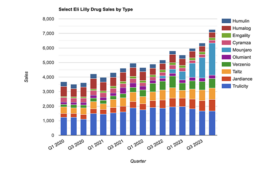
A new technique for combatting both forms of diabetes could be on the horizon.
Researchers from the University of Texas Health Science Center developed an experimental treatment that was able to cure diabetes in a group of mice.
The therapy caused the mice’s pancreas to start producing more beta cells, which are responsible for secreting insulin. Beta cells in Type 1 diabetes are destroyed by the immune system whereas these cells in the Type 2 form fail and insulin decreases.
The team at Texas accomplished this feat through a process called gene transfer. It involves using a virus as a vector to introduce specific genes into the pancreas. The genes enter the pancreas causing digestive enzymes and other cell types to begin making insulin.
Gene transfers using these viral vectors have been approved by the Food and Drug Administration nearly 50 times for different diseases, according to this announcement.
“It worked perfectly,” said Dr. Doiron, co-inventor of this technique and the assistant professor of medicine at UT Health, in a statement. “We cured mice for one year without any side effects. That’s never been seen. But it’s a mouse model, so caution is needed. We want to bring this to large animals that are closer to humans in physiology of the endocrine system.”
Essentially, the breakthrough exactly regulated blood sugar in these mouse models, which could be an advance over traditional insulin therapies and similar diabetes medications. One potential side-effect of these drugs is that they could drop blood sugar to too low of a level if not closely monitored.
“A major problem we have in the field of Type 1 diabetes is hypoglycemia (low blood sugar),” continued Doiron. The gene transfer we propose is remarkable because the altered cells match the characteristics of beta cells. Insulin is only released in response to glucose.”
Next, the scientists will perform a trial with large-animal studies with the goal of conducting human clinical trials in the next three years.
A patent was granted to the team in January while the university plans on spinning out a separate company to begin commercialization at an unspecified date.
Filed Under: Drug Discovery




